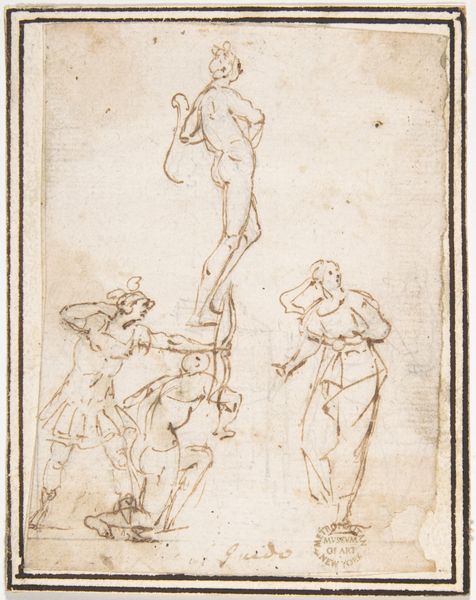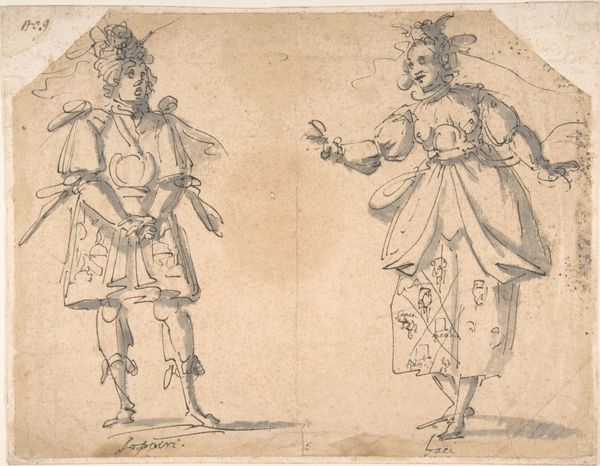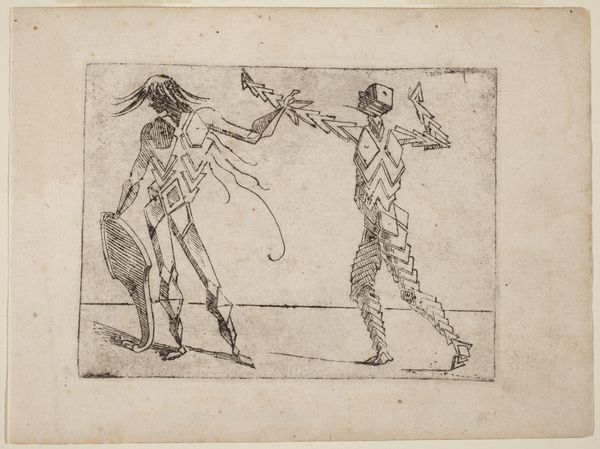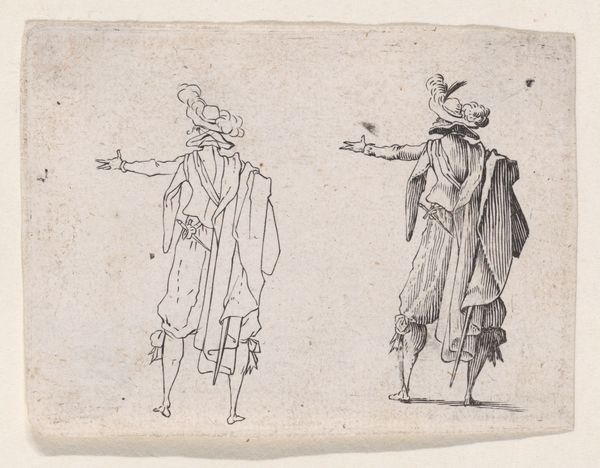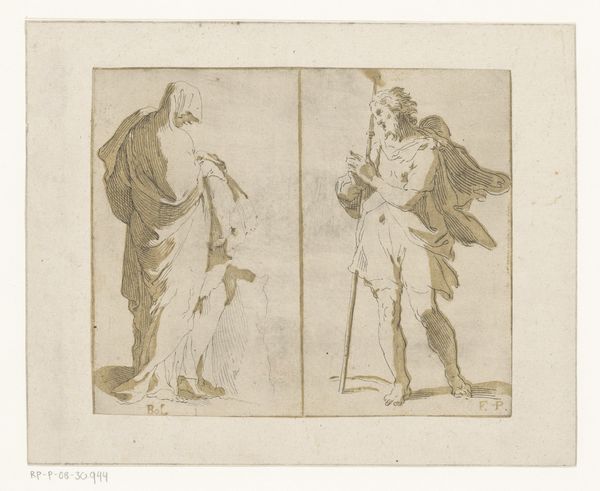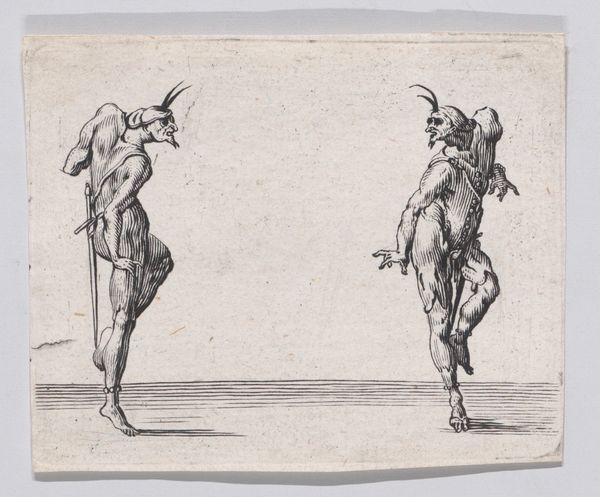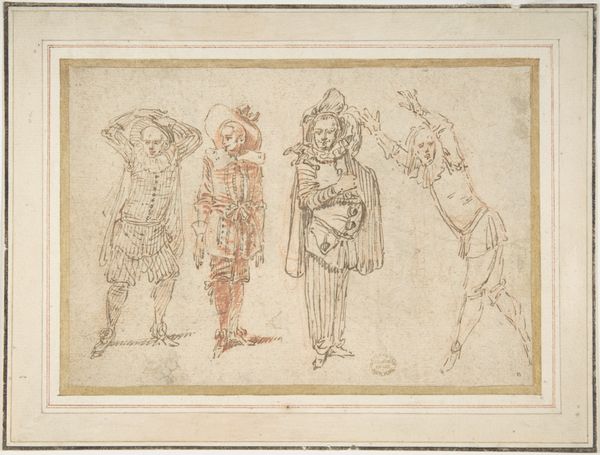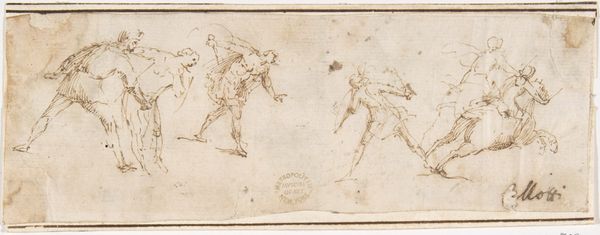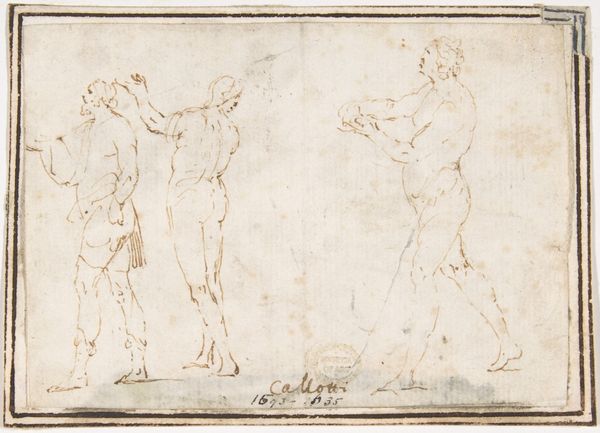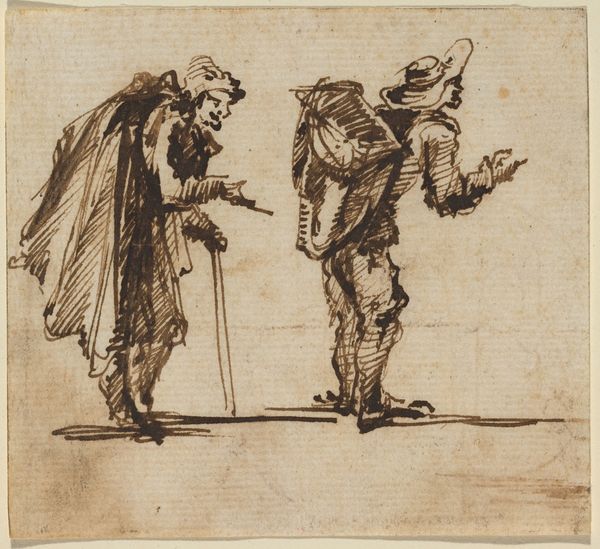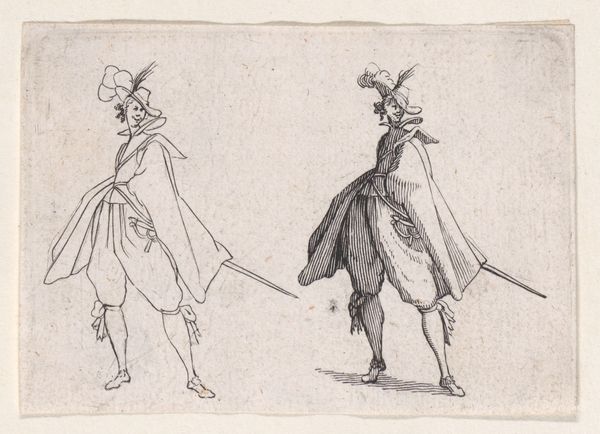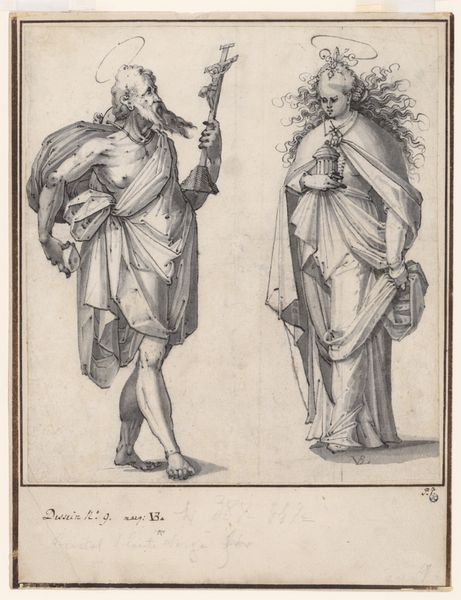
To genier, den ene med oliegren, den anden med fasces 1798 - 1801
0:00
0:00
drawing
#
drawing
#
neoclacissism
#
allegory
#
figuration
#
academic-art
Dimensions: 173 mm (height) x 182 mm (width) (bladmaal)
Curator: This drawing by Nicolai Abildgaard, dating from 1798 to 1801, is titled "Two Geniuses, One with an Olive Branch, the Other with Fasces." It's a pen and wash drawing, typical of his neoclassical style. Editor: My immediate reaction is one of intriguing contrast. These aren't the plump, jovial cherubs of the Renaissance. They seem quite serious, almost burdened, despite their wings. Curator: That’s a keen observation. Abildgaard was very interested in the political climate. This drawing depicts two allegorical figures: one symbolizing peace, the other authority or power. The olive branch, of course, signifies peace, while the fasces, a bundle of rods and an axe, represent Roman authority. Editor: So the fasces, usually seen as a symbol of strength and unity, seems a bit…ominous here. There’s a certain tension. He's almost hugging it. Does this drawing reflect some anxieties around authority, perhaps during the tumultuous years around the French Revolution? Curator: Absolutely. Abildgaard, though influenced by antiquity, was very much engaged with contemporary politics. The placement of these symbols suggests a precarious balance between peace and the enforcement of order, or potentially, the threat of tyranny. It encourages reflection of the role of civic duty. Editor: The figures themselves, these winged “geniuses,” are interesting too. There's something androgynous about them. Are they meant to represent specific figures, or ideals? The classical drapery almost feels like it obscures rather than reveals their forms. Curator: That ambiguity is intentional, I think. They're not portraits, but idealized figures representing concepts. In academic art, and especially within Neoclassicism, these allegorical figures serve as symbols embodying grand ideas about civilization, governance, and human potential. Editor: And yet, I can't help but read a bit of unease into their expressions. Maybe it is the stark lines of the drawing that convey that emotion. There is nothing flowy or delicate about it. Curator: It's a reminder that even in idealizing moments and figures, artists of the time still contended with the uncertainties of the world. Editor: That contrast is so strong, giving so much to discuss on something that might appear simple at first glance. Curator: Exactly. By examining Abildgaard's piece through a historical and cultural lens, and identifying its key symbolic attributes, the artwork reveals far more complex reflections of its time.
Comments
No comments
Be the first to comment and join the conversation on the ultimate creative platform.
